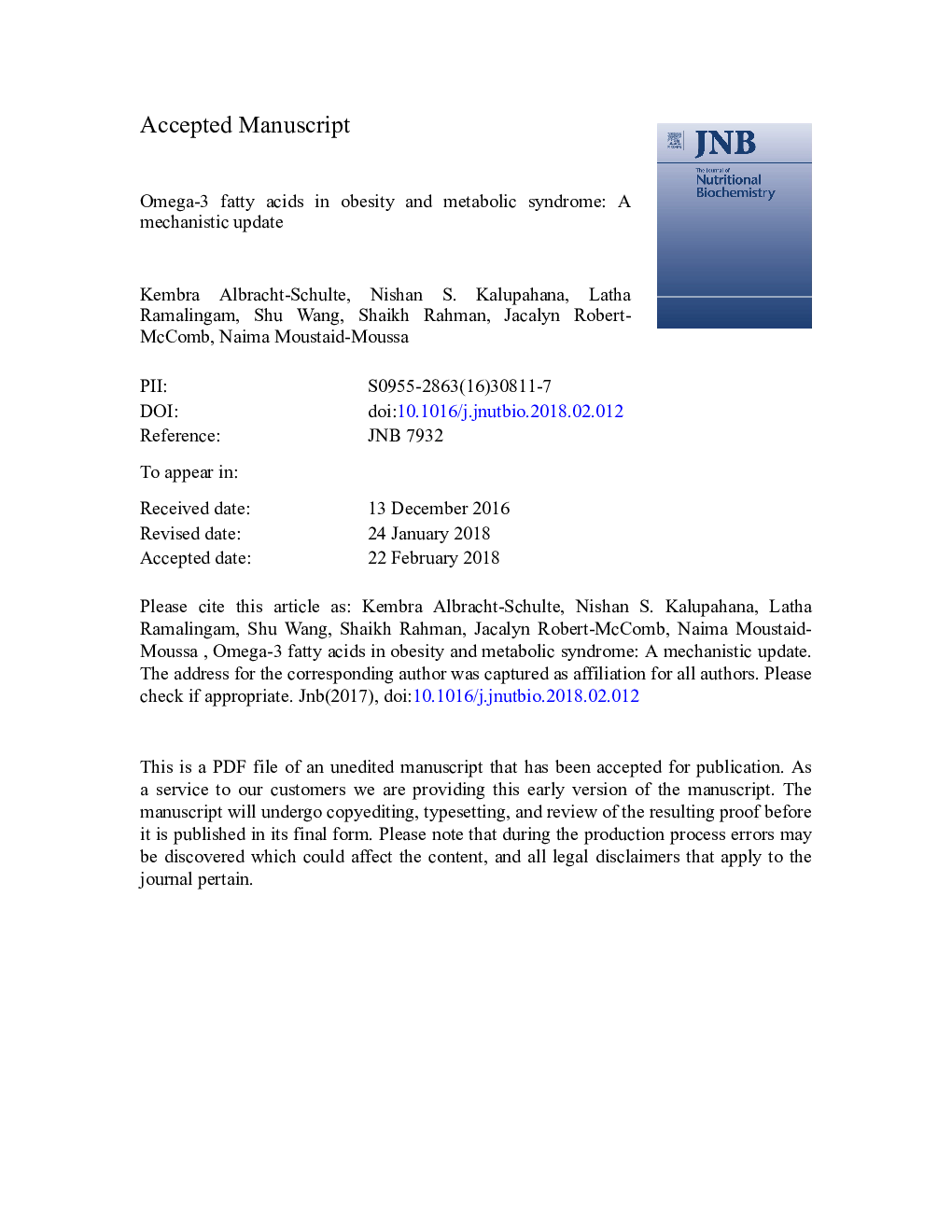| Article ID | Journal | Published Year | Pages | File Type |
|---|---|---|---|---|
| 8336288 | The Journal of Nutritional Biochemistry | 2018 | 53 Pages |
Abstract
Strategies to reduce obesity have become public health priorities as the prevalence of obesity has risen in the United States and around the world. While the anti-inflammatory and hypotriglyceridemic properties of long-chain omega-3 polyunsaturated fatty acids (n-3 PUFAs) are well known, their antiobesity effects and efficacy against metabolic syndrome, especially in humans, are still under debate. In animal models, evidence consistently suggests a role for n-3 PUFAs in reducing fat mass, particularly in the retroperitoneal and epididymal regions. In humans, however, published research suggests that though n-3 PUFAs may not aid weight loss, they may attenuate further weight gain and could be useful in the diet or as a supplement to help maintain weight loss. Proposed mechanisms by which n-3 PUFAs may work to improve body composition and counteract obesity-related metabolic changes include modulating lipid metabolism; regulating adipokines, such as adiponectin and leptin; alleviating adipose tissue inflammation; promoting adipogenesis and altering epigenetic mechanisms.
Keywords
Related Topics
Life Sciences
Biochemistry, Genetics and Molecular Biology
Biochemistry
Authors
Kembra Albracht-Schulte, Nishan Sudheera Kalupahana, Latha Ramalingam, Shu Wang, Shaikh Mizanoor Rahman, Jacalyn Robert-McComb, Naima Moustaid-Moussa,
